* Title suggested by Julius Grocholski
Do you remember Ben Smith’s
analysis on bunch formation
and its application to Rugby Union? The bunch formation is similar to a
pod of 3 players in rugby. It doesn’t matter
if this is a recently fashionable
1-3-3-1 formation or a 10-12-14 pod, the concept described by Ben may become an interesting
addition to the standard attacking system. Rub and shallow-crossing routes cause confusion – in the words of coach
Dan Robinson
when the receivers are compressed into a very small area, the defences (…) have trouble identifying [receivers]
as they move. Therefore, from the defensive standpoint, a bunch
formation is easier to stop with a zone coverage. Not surprisingly, this is also the case in rugby, as Ben explained in his piece.
Bunch Formation and Zone Coverage
Now, my piece is merely an addendum to what Ben Smith has written. As a defensive co-ordinator, bunch formation never concerned me too much. I’ve been a big fan of a somehow outmoded Cover 3 Cloud
and with a free safety like
Deante Battle the bunch was not particularly challenging. Unless the running back was good
at catching passes. And this is what my piece will be about.
The fourth receiver changes everything. Let’s take a look at the play below. Three receivers in the bunch formation face two defenders (C – cornerback, Ni – nickel back). #1 runs hitch, #2 starts
with the wheel but then goes out, #3 is initially slants but once the linebacker drops to the hook zone, #3 sprints to the flat. Football is a game of numbers, the offence has a numerical advantage,
one receiver in the flat is not covered.
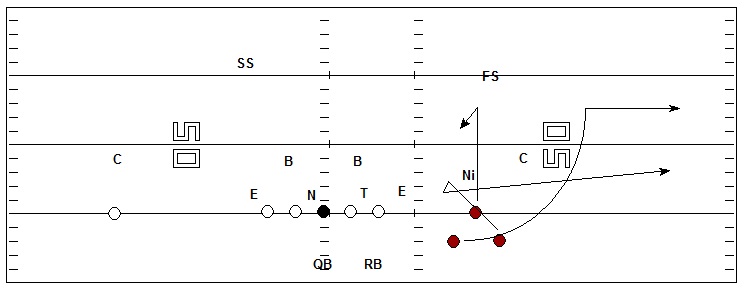
This is easier to draw than to execute. If this is Cover 4, a superior free safety like Deante can take the #2 and the CB can sit in the flat. Adjustment is a matter of communication. It’s even easier
to defend this passing concept when the secondaries play Cover 3 Cloud. But if the running back is no longer required for pass protection, the defence is outnumbered as shown in the graph below.
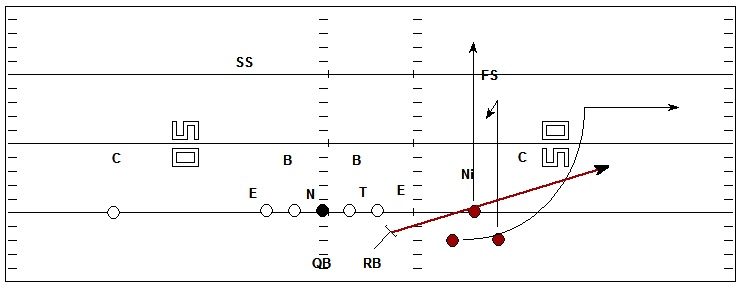
As previously, #2 receiver is covered by the CB, but now #1 releases vertically, which requires the FS to drop deep. Nickel covers #3, which leaves the RB open in the flat. Even if the defence is in
Cover 3 Cloud, there’s a high-low on the CB, which is pretty much what the offence wanted to achieve.
Putting theory into practice
Now back to Rugby Union. Not long after I read Ben’s analysis, I was scouting the Lithuanian offence. You may wonder what Tier-3 rugby’s got to do with application of bunch formation. The answer
is simple. Lithuania have successfully included the fourth receiver.
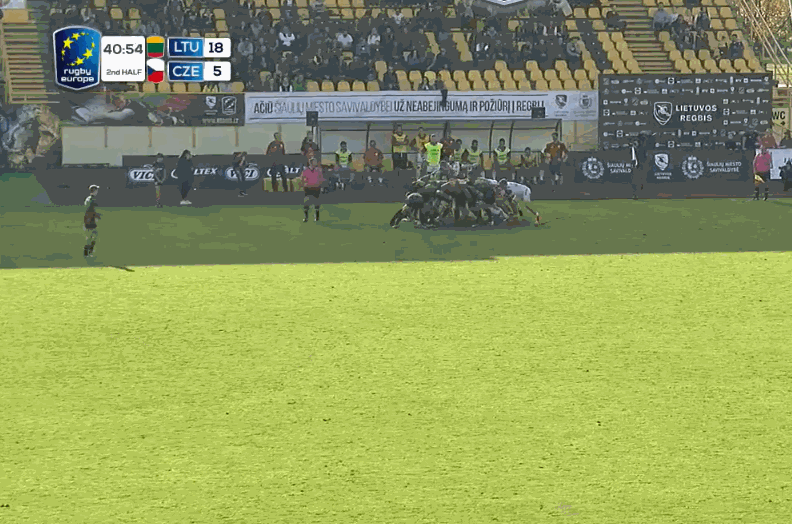
This is exactly the sort of play when the running back creates a mismatch against the zone coverage. In this case, the fourth
receiver is the Lithuanian fullback Dainius Tamoliunas. The backs are aligned exactly as in Ben’s article: a tight triangle on a big open side outside 10. The play is a four-pass play:
[1] scrum-half to fly-half
[2] fly-half to bunch
[3] bunch to fly-half
[4] fly-half to fullback.
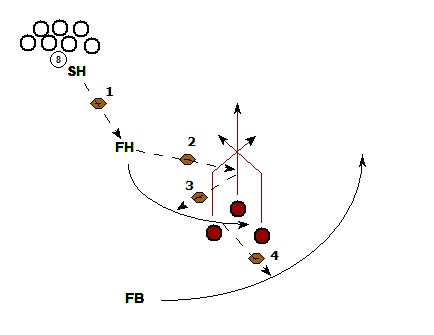
It’s very likely that the rub routes confused the defenders, forcing them to close the space in front of the pod players.
This in turn put Tamoliunas in a one-on-one situation with the Czech winger Michal Neuzil. It also created acres of open space; the 12-14 channel, as we can see below, was at least 5 metres wide. About
35 metres and 3 beaten defenders later, Dainius Tamoliunas scored a try.
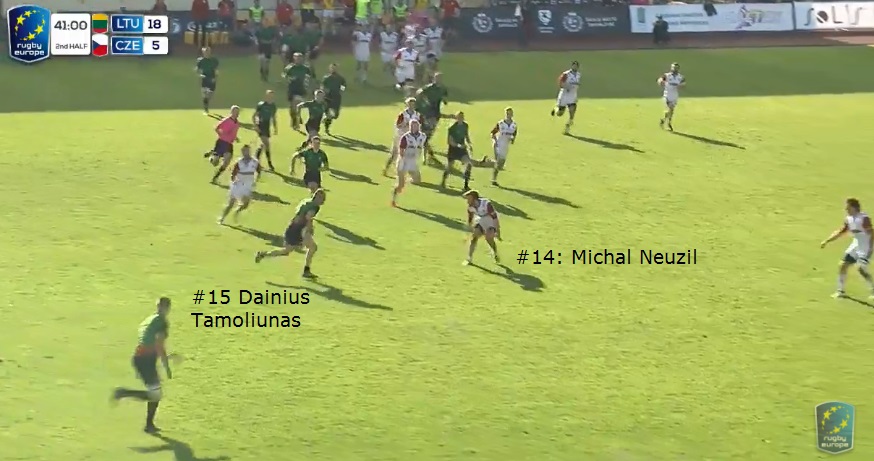
Adding a fourth receiver to the bunch formation can successfully disorganise the zone defence. Obviously, the Tier-1 defenders are much faster and more keen to blitz, but that would put even more emphasis on
the rub and crossing routes.
REIC 2018-19: Lithuania vs. Czech Rep.
Thanks to the
Rugby Europe, the match is available
on-line.
Post Scriptum 1
I wonder how many football fans watching the [3] pass would think to themselves ‘oh, I got it, that’s a flee flicker’.
Post Scriptum 2
If you want to learn more about various passing concepts out of the bunch formation or if you look for inspiration in football,
I recommend Steve Axman’s ‘Attacking Coverages with the Passing Game’.




